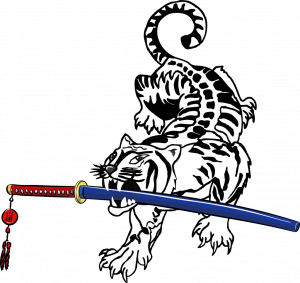It figures that he has a post about the topic I’m trying to sound knowledgeable about! I’ve been writing this post since we had a discussion in class about glitches (adjustments to drawing a sword due to size).
“Situational awareness can get a little toxic sometimes, spending all day looking for dangers is a bit taxing.
I recommend instead of staying in a code, just stay curious.
Paying attention to all the new things around you is fun, and if there is a threat, you will see that too!”
(Randy King – @randykinglive on Facebook posted 10/06/2021)

He is very correct though! The concept of situational awareness has been something in the self-defense and personal protection industry for quite a while. It seems to be one of the main focus points taught for any of the self-defense programs. This is important because if you don’t have situational awareness you can end up in trouble quickly.
The other concept that is used a lot is the OODA loop. This, too, comes from combat and protecting yourself. The OODA loop gets used quite a bit for determining speed at which you can respond to situations.
These two concepts are greatly intertwined and cannot be done without each other. The part that gets lost is that these concepts are in everything we do, not only personal protection.
It has become very popular over the past several decades of sports to review video and study strategies of your opponents. In this study of your opponents I think that it has become unfortunate that we have stopped studying how these concepts help us in daily life.
Yes, I’ve used the “drive your car better” analogy several times and haven’t even mentioned that it is all about situational awareness and the OODA loop. I’ve used focus, skill development, problem solving and self control as the main concepts applied. Those are true but not the real concepts that are in use.
Personal protection will discuss situational awareness with things like knowing the environment (outside – curbs, alleys, terrain, etc.), recognizing the environment (inside – floor plans, exits, construction/building materials, etc.), where people are, where potential threats will come from, and many more. If you’ve never trained with Randy King or Rory Miller, you should do so!
It is easy to see the situational awareness transferred into driving a car. There are many others out doing the same thing. If you watch, you will also see an enormous amount of OODA loop fails. Unnecessary left lane driving, poor lane changes, poor exit/entry ramp strategies will all fall under OODA loop fails. The other side of this is planning out your lane changes for exits, knowing that you’re not blocking traffic (left lane camping), how construction will affect your drive/speed.
Now let’s change the way we present situational awareness. Recently, I did a short personal protection training for some junior high school students. One had been unfortunate to have been in an incident just a few days prior. Gratefully, unhurt, but frustrated and confused. I asked if they saw the incident coming. The response was no. I asked why not and was told that they had felt safe at school and hadn’t been watching for anything. Isn’t that when things happen?
Since this particular group happened to be hockey players also, I asked if they knew where their teammates were on the ice during a shift. The response was always. They responded the same for where opponents were on the ice. They told me that it was the way to make sure that scoring chances were created or stopped depending upon who had the puck.
I told them that the skill should be extended to off ice situations. They hadn’t thought about it in the same manner but all agreed that they used awareness to walk through the Mall Of America and the halls of their school. Being courteous enough to not bump into people happens to be a social application of situational awareness. Another example of simple courtesy is moving enough in a store aisle to not make another person passing uncomfortable.
There are a handful of ways to study and practice situational awareness. Yes, an obvious one is a personal protection program. However, you can learn it as part of martial arts classes. It takes a bit more work to recognize the system that is in place but you should have plenty of help.
The system is taught in an order that builds upon the previous. Even lining up in rank fits this. Where should you go? One of the biggest hassles of group training is getting people to line up correctly. Then there is the terminology. Since this gets repeated at the beginning and end of virtually every class, if you can’t repeat them, as a senior student, that’s on you! This goes for the standard drills of the class!


